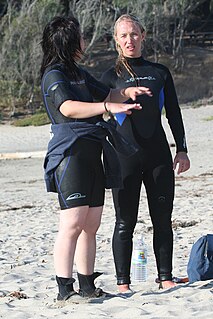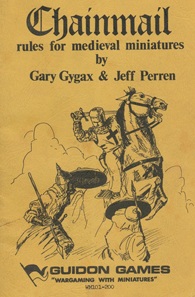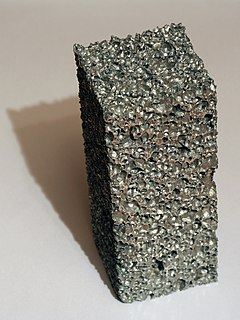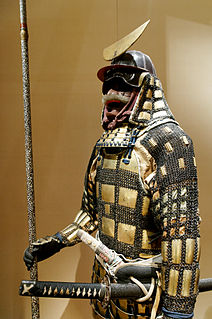
Mail or maille is a type of armour consisting of small metal rings linked together in a pattern to form a mesh. A coat of this armour is often referred to as a hauberk, and sometimes a byrnie.

A ballistic vest or bullet-resistant vest, often called a bulletproof vest, is an item of personal armor that helps absorb the impact and reduce or stop penetration to the body from firearm-fired projectiles and shrapnel from explosions, and is worn on the torso. Soft vests are made of many layers of woven or laminated fibres and can protect the wearer from small-calibre handgun and shotgun projectiles, and small fragments from explosives such as hand grenades.

Rubber fetishism, or latex fetishism, is the fetishistic attraction to people wearing latex clothing or, in certain cases, to the garments themselves. PVC fetishism is closely related to rubber fetishism, with the former referring to shiny clothes made of the synthetic plastic polyvinyl chloride (PVC) and the latter referring to clothes made of rubber, which is generally thicker, less shiny, and more matte than latex. PVC is sometimes confused with the similarly shiny patent leather, which is also a fetish material. Latex or rubber fetishists sometimes refer to themselves as "rubberists". Gay male rubberists tend to call themselves "rubbermen".

A wetsuit is a garment, usually made of foamed neoprene, which is worn by surfers, divers, windsurfers, canoeists, and others engaged in water sports and other activities in or on water, primarily providing thermal insulation, but also buoyancy and protection from abrasion, ultraviolet exposure and stings from marine organisms. The insulation properties depend on bubbles of gas enclosed within the material, which reduce its ability to conduct heat. The bubbles also give the wetsuit a low density, providing buoyancy in water.

Neoprene is a family of synthetic rubbers that are produced by polymerization of chloroprene. Neoprene exhibits good chemical stability and maintains flexibility over a wide temperature range. Neoprene is sold either as solid rubber or in latex form and is used in a wide variety of applications, such as laptop sleeves, orthopaedic braces, electrical insulation, liquid and sheet applied elastomeric membranes or flashings, and automotive fan belts.

A dry suit or drysuit provides the wearer with environmental protection by way of thermal insulation and exclusion of water, and is worn by divers, boaters, water sports enthusiasts, and others who work or play in or near cold or contaminated water. A dry suit normally protects the whole body except the head, hands, and possibly the feet. In hazmat configurations, however, all of these are covered as well.

A diving suit is a garment or device designed to protect a diver from the underwater environment. A diving suit may also incorporate a breathing gas supply. but in most cases applies only to the environmental protective covering worn by the diver. The breathing gas supply is usually referred to separately. There is no generic term for the combination of suit and breathing apparatus alone. It is generally referred to as diving equipment or dive gear along with any other equipment necessary for the dive.

Military vehicles are commonly armoured to withstand the impact of shrapnel, bullets, missiles or shells, protecting the personnel inside from enemy fire. Such vehicles include armoured fighting vehicles like tanks, aircraft and ships.

Body armor/armour, personal armor/armour, suits of armour or coats of armour all refer to protective clothing, designed to absorb and/or deflect slashing, bludgeoning and penetrating attacks by weapons. It was historically used to protect military personnel, whereas today, it is also used to protect various types of police, private citizens, private security guards or bodyguards. Today there are two main types: regular non-plated personal armor and hard-plate reinforced personal armor, which is used by combat soldiers, police tactical units, private citizens, and hostage rescue teams.

Chainmail is a medieval miniature wargame created by Gary Gygax and Jeff Perren. Gygax developed the core medieval system of the game by expanding on rules authored by his fellow Lake Geneva Tactical Studies Association (LGTSA) member Perren, a hobby-shop owner with whom he had become friendly. Guidon Games released the first edition of Chainmail in 1971 as its first miniature wargame and one of its three debut products. Chainmail was the first game designed by Gygax that was available for sale as a professional product. It included a heavily Tolkien-influenced "Fantasy Supplement", which made Chainmail the first commercially available set of rules for fantasy wargaming, though it follows many hobbyist efforts from the previous decade. Dungeons & Dragons began as a Chainmail variant, and Chainmail pioneered many concepts later used in Dungeons & Dragons, including armor class and levels, as well as various spells, monsters and magical powers.

A metal foam is a cellular structure consisting of a solid metal with gas-filled pores comprising a large portion of the volume. The pores can be sealed or interconnected. The defining characteristic of metal foams is a high porosity: typically only 5–25% of the volume is the base metal. The strength of the material is due to the square-cube law.

Barding is body armour for war horses. The practice of armoring horses was first extensively developed in antiquity in the eastern kingdoms of Parthia and Pahlava, and after the conquests of Alexander the Great it made its way into European military practices via the Seleucid Empire and later Byzantine Empire. Though its historical roots lie in antiquity in the regions of what was once the Persian Empire, barded horses have become a symbol of the late European Middle Ages chivalry and the era of knights.

The Batsuit is the costume of the fictional superhero Batman, who appears in American comic books published by DC Comics. The suit has been depicted in various ways, and the stories themselves have described Batman as modifying the details of his costume from time to time. However, it usually consists of a grey body suit, the chest emblazoned with a stylized black bat, and blue-black accessories: a wide scalloped cape, gloves with a series of fin-like projections, boots, and a close-fitting cowl with ear-like projections to suggest a bat's head; and a utility belt containing a variety of gadgets.
Within the world of the Dungeons & Dragons fantasy role-playing game, construct is a type of creature, or "creature type". Constructs are either animated objects, or any artificially constructed creature.

Sangu is the term for the three armour components that protected the extremities of the samurai class of feudal Japan.
Banded mail is a neologism, coined in the 19th century, describing a type of composite armor formed by combining the concepts behind the Roman lorica segmentata with splint armour. Its historicity is doubtful. It has become entrenched in the popular consciousness as a result of its inclusion in the armor list for Dungeons & Dragons.

Hugh Bradner was an American physicist at the University of California who is credited with inventing the neoprene wetsuit, which helped to revolutionize scuba diving.

Explosion welding (EXW) is a solid state (solid-phase) process where welding is accomplished by accelerating one of the components at extremely high velocity through the use of chemical explosives. This process is most commonly utilized to clad carbon steel plate with a thin layer of corrosion resistant material. Due to the nature of this process, producible geometries are very limited. Typical geometries produced include plates, tubing and tube sheets.
The use of personal protective equipment (PPE) is inherent in the theory of universal precaution, which requires specialized clothing or equipment for the protection of individuals from hazard. The term is defined by the Occupational Safety and Health Administration (OSHA), which is responsible for PPE regulation, as the "equipment that protects employees from serious injury or illness resulting from contact with chemical, radiological, physical, electrical, mechanical, or other hazards." While there are common forms of PPEs such as gloves, eye shields, and respirators, the standard set in the OSHA definition indicates a wide coverage. This means that PPE involves a sizable range of equipment. There are several ways to classify them such as how gears could be physiological or environmental. The following list, however, sorts personal protective equipment according to function and body area.

Tatami (畳具足), or tatami gusoku and gusoku, was a type of lightweight portable folding Japanese armour worn during the feudal era of Japan by the samurai class and their foot soldiers (ashigaru). The Tatami dō or the tatami katabira were the main components of a full suit of tatami armour.



















